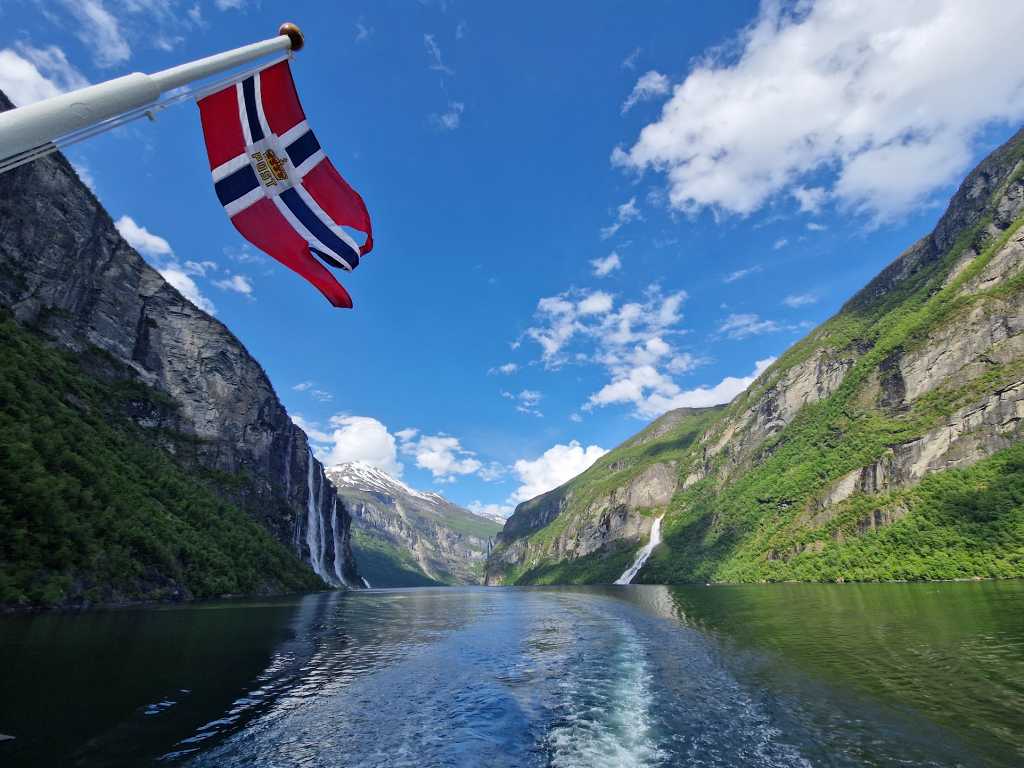Fjords are inherently linked to Norway. After all, the very word fjord is an ancient Viking term, meaning a crossing point. The Nordic nation is famed for its fjords, which can be found up and down the country. Some of them are accredited by UNESCO; others are simply beautiful. Either way, there’s a good reason that seeing the Norwegian fjords is up there on many people’s bucket lists.
Disclaimer: This post contains affiliate links. This means that should you click on certain links, and then subsequently purchase a product, I will receive a small commission.
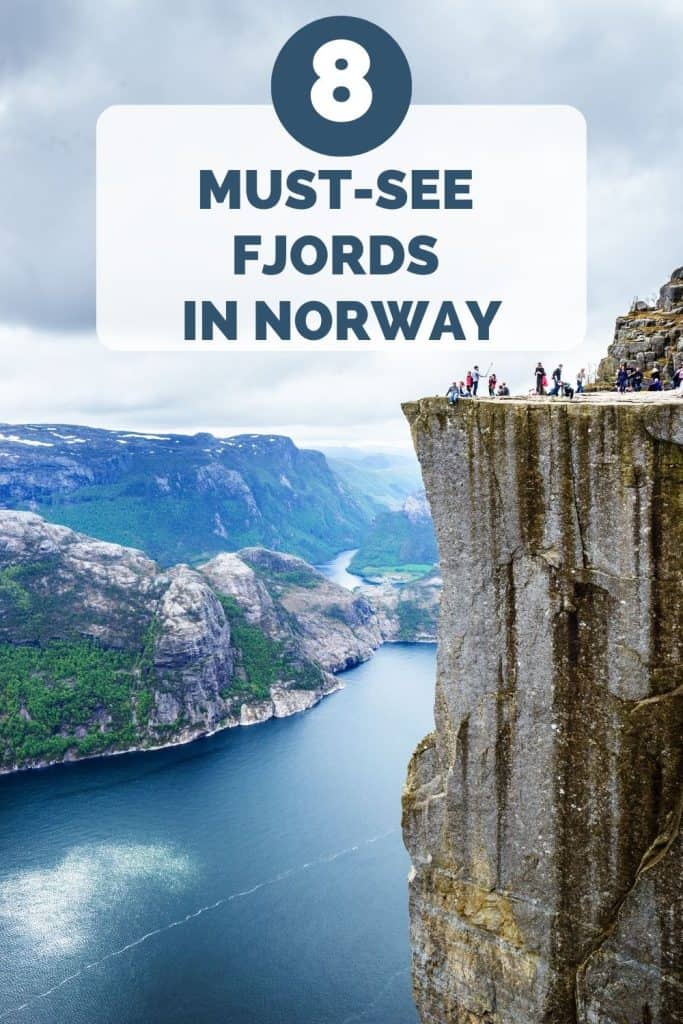
Table of Contents
What is a fjord?
A fjord is a long, narrow body of water that features steep sides created by the action of glaciation that took place below sea level over many years – over two and a half million years, to be exact. They can be found in many different countries, from Chile to Scotland. Norway’s coastline, however, is littered with fjords.
There are nearly 1,200 fjords in Norway. All these steep inlets make Norway’s coast around 29,000 kilometers long – without them, the coastline would only be 2,500 kilometers.
However, visiting the fjords in Norway can be confusing. Not only are there so many of them, but they’re also usually really long with different branches (often more famous than the “parent” fjord itself). These are the best fjords to visit in Norway to help you whittle down your options.
Most Beautiful Fjords in Norway
Geirangerfjord
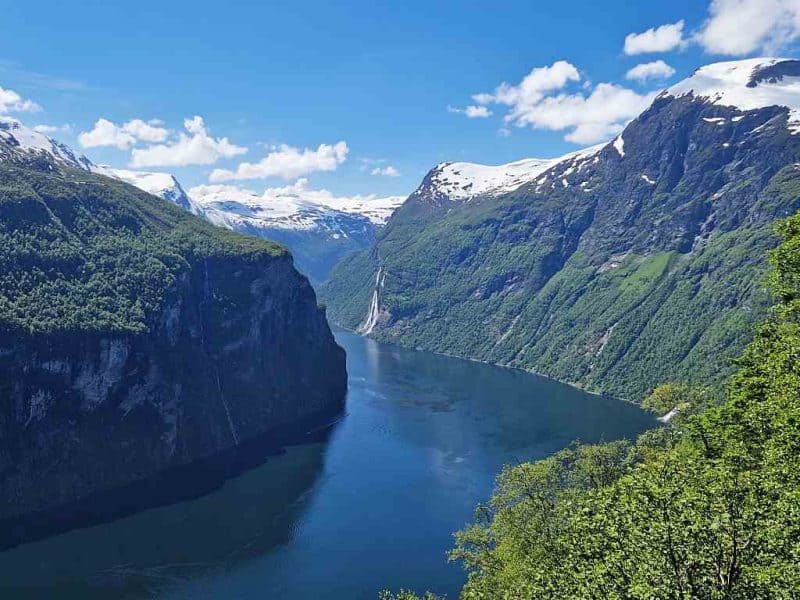
Given UNESCO status in 2005, Geirangerfjord can be found in the west of Norway. This famous body of water is an impossibly picturesque place, with dramatic rocky cliffs clad with greenery jutting out from the inlet far below. It’s no wonder this is often considered one of the best fjords in Norway.
As well as its beauty, there’s a unique habitat at Geirangerfjord that has been carved out here since the ice age. The environment is lush, with farms to be found around the rural lands surrounding the fjord.
It’s also here that you’ll find several stunning waterfalls that cascade down to the water, the most famous being Brudesløret (The Bridal Veil), Frairen (The Suitor), and De Syv Søstrene (The Seven Sisters). The landscape even inspired scenes in the Disney hit Frozen.
Getting there:
Geirangerfjord has an international airport with daily flights that connect to both Oslo and Bergen. Flights from both take around an hour. Driving from Oslo to this fjord takes around six to seven hours, covering approximately 450 kilometers. A bus service also connects the two destinations, taking six and a half hours.
You might be interested in this Fjord cruise from Ålesund to Geirangerfjord and back to Ålesund with free time to explore Geiranger.
Sognefjord
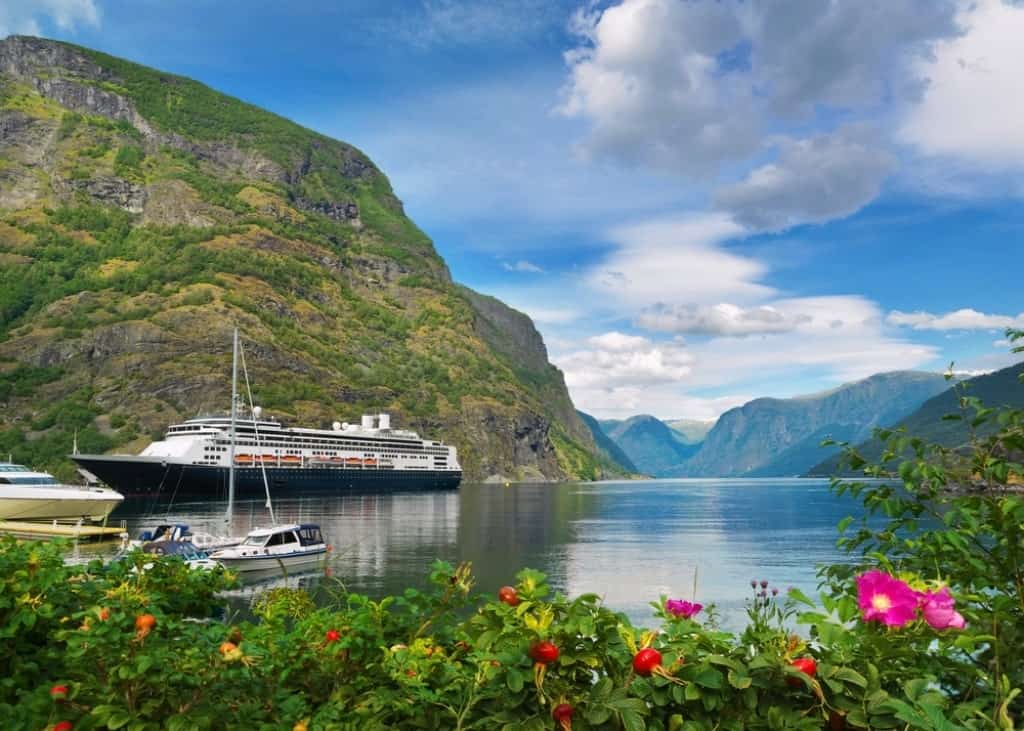
Often dubbed “the King of the Fjords,” Sognefjord is the largest and deepest fjord in the country – the second-largest in the entire world – totaling an impressive 200 kilometers with a maximum depth of 1,308 meters. Needless to say, this particularly impressive fjord is counted among the best fjords in Norway and is a wonder to visit.
Located in western Norway, in Vestland county, the fjord is surrounded by steep cliffs and has multiple other fjords branching off from it. Boats regularly glide up the still waters of this gargantuan fjord, stopping off at small villages along the way and exploring the smaller canyons. Charming wooden stave churches and rural farms add to the bucolic scenery.
Getting there:
By train, the journey begins in Oslo and finishes at Flam before connecting to Sognefjord by passenger boat or bus. It’s possible to catch a flight from Oslo to Bergen, taking 45 minutes, after which a bus or boat connects visitors to the fjord. Buses connect Oslo with Sognefjord, too, taking approximately seven to eight hours and leaving twice daily. Driving covers a distance of 401 kilometers and takes six hours.
You might like:
From Bergen: Flam Full-Day Cruise to Sognefjord.
From Oslo: Private Round-Trip Tour to Sognefjord via Flåm
Nærøyfjord
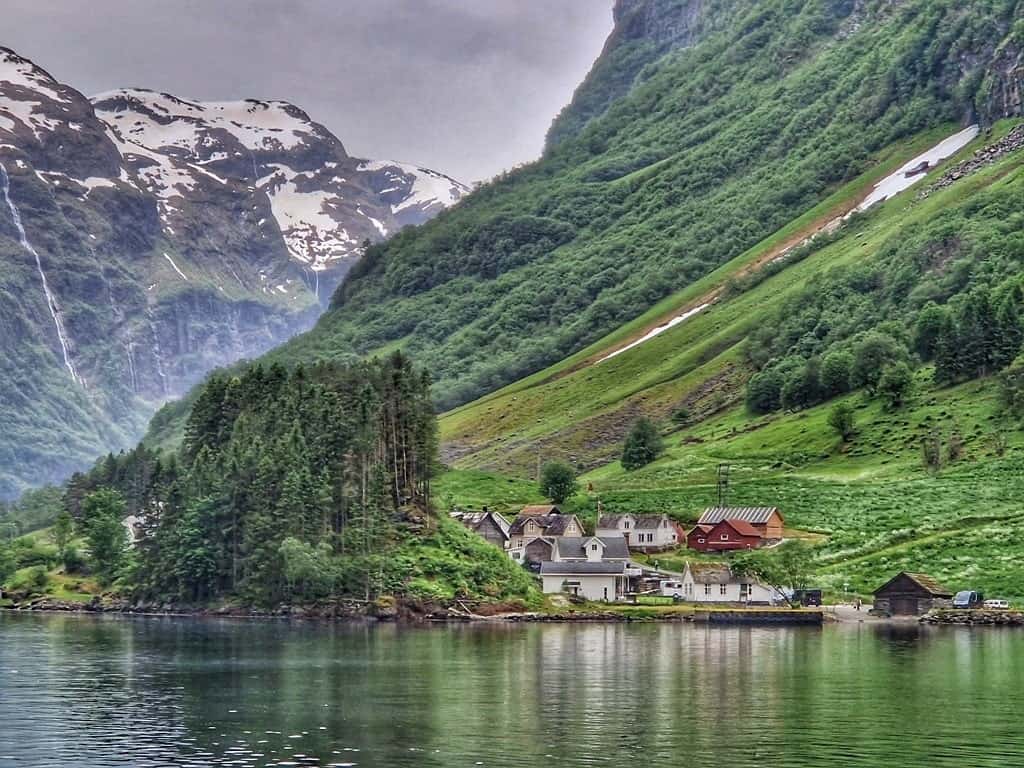
This arm of the Sognefjord is a UNESCO-recognised waterway and easily one of the best fjords in Norway. Here at Nærøyfjord, you’ll find a deep blue body of water plunging through a forested valley, where snow-dusted peaks reach the skies high above. At some points, this sliver of a fjord is only 250 meters.
Traveling by boat through Nærøyfjord is a captivating way to experience the natural landscape, with farms and villages clinging to steep cliffs along the way.
Getting there:
A train from Oslo to Myrdal takes four and a half hours; from there, it’s around an hour’s drive to Nærøyfjord. If you want to self-drive, this can take around five hours leaving from Oslo and covers 460 kilometers.
Aurlandsfjord
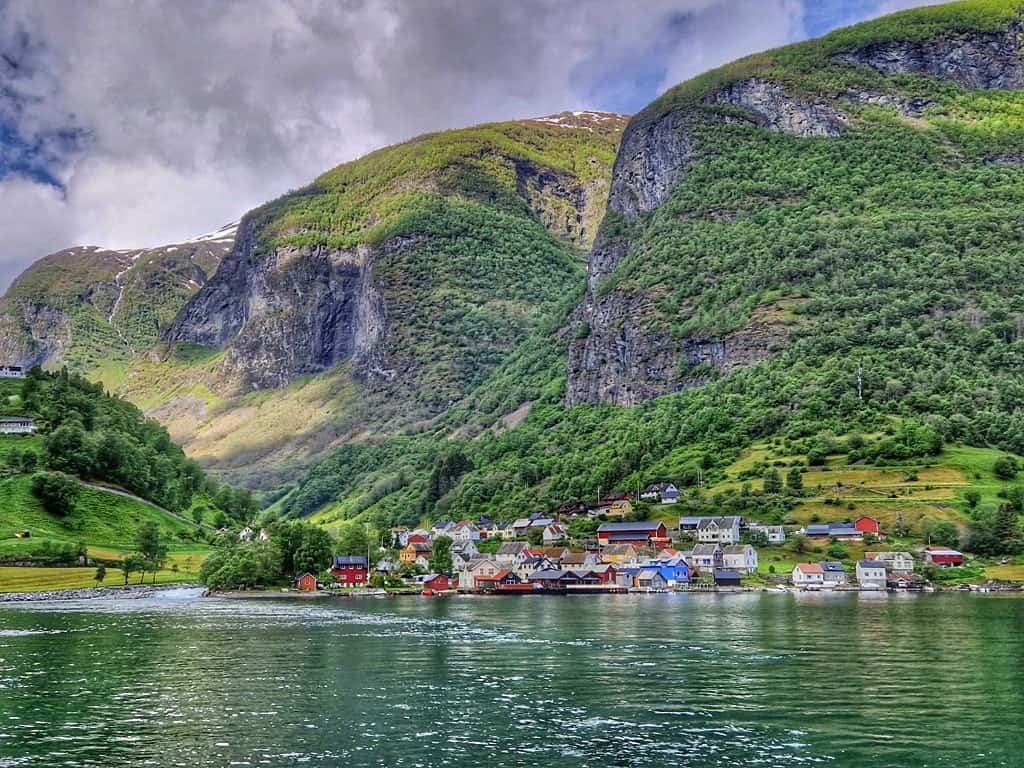
Situated in Vestland county, Aurlandsfjord is yet another branch of the Sognefjord. This deep, narrow stretch of water runs for around 29 kilometers; large parts of it are accredited by UNESCO. Exploring this Norwegian fjord, you’ll find many charming villages along the way.
In particular, the famous village of Flam is situated here, known for its railway station and a popular cruise port. This is also the jumping-off point for exploring the verdant Flam Valley. Thanks to the position of this transport hub near the fjord, Aurlandsfjord is much more easily accessible compared to the other best fjords in Norway.
Getting there:
From Oslo Central Station, you can take the number 41 train to Myrdal, changing here for the number 42, which runs to Flam. In total, this is a fairly long journey, though, taking around 10 hours.
However, from Lysaker Station, you can catch a train to Flam, taking six and a half hours. Driving to Aurlandsfjord from Oslo takes between four and five hours, covering 320 kilometers.
Lysefjord
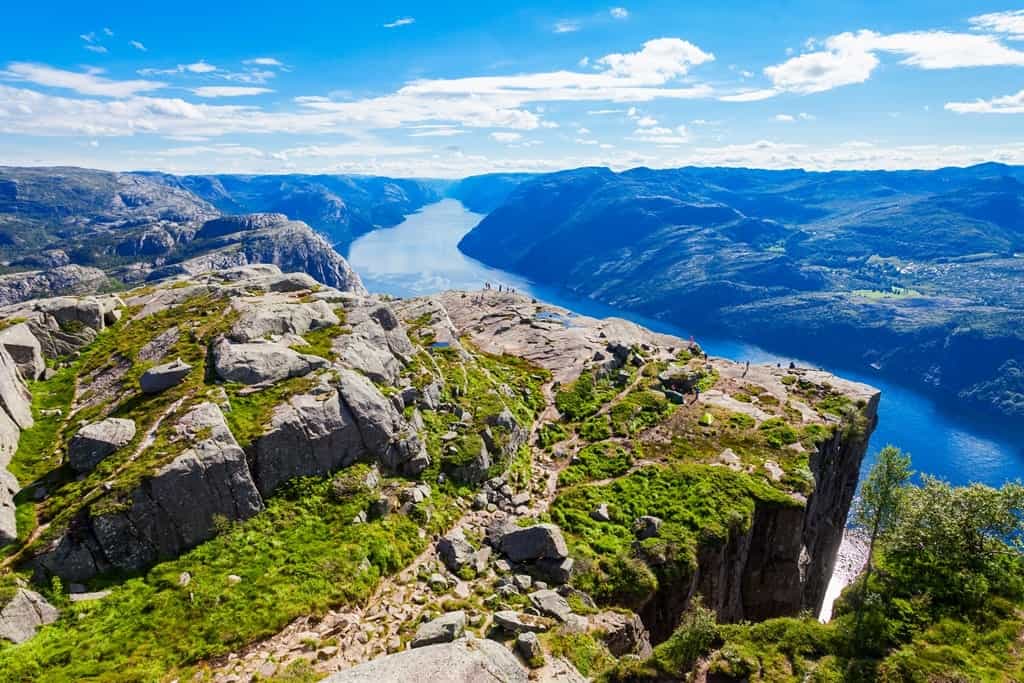
Located in Ryfylke, Lysefjord lies to the south of western Norway’s best and most famous fjords. The dramatic landscape carved by this southernmost fjord is surrounded by large, boulder-like rock formations and mountains that rise over 1,000 meters from sea level.
One of the most famous rock formations here is the Preikestolen (the Pulpit Rock), which sits 604 meters above the fjord and, amazingly, features a stark, flat top. With its mild climate, hiking, biking, and staying in cabins is the order of the day here.
Getting there:
A 45-minute flight from Oslo to Stavanger will put visitors within easy striking distance of Lysefjord; after that, public transport will take you the rest of the way. Trains from Oslo to Stavanger take eight and a half hours; it then takes another hour and a half to reach the fjord.
You might also like:
From Stavanger: Pulpit Rock and Lysefjord Scenic Cruise.
From Stavanger: Guided Kayaking in Lysefjord.
Romsdalsfjord
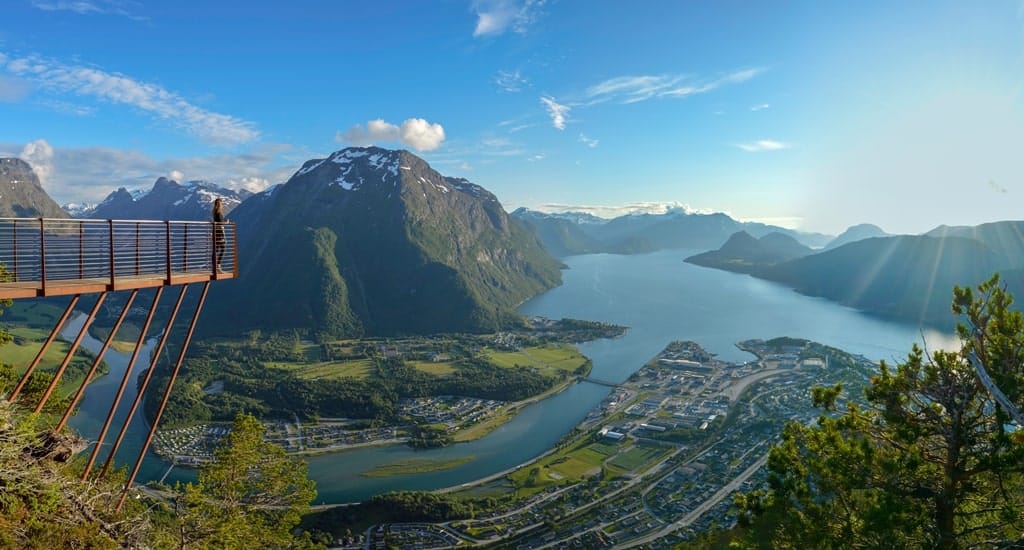
At 88 kilometers long, Romsdalfjord may not be the longest fjord in Norway (in fact, it’s the ninth-longest in the country). Still, this particular spot provides an intriguing mix of pointed mountains and stark coastal scenery, with islands and reefs studding the seas it meets. There’s even some interesting history to be discovered here, such as Veøya (Holy Island).
This lies at the junction of three main branches of Romsdalsfjord and was once a Medieval trading post; visitors today can see a church (now a museum) that dates back to the twelfth century. Cruise ships have been plying the waterways here since 1880, so it’s long been known as one of the best fjords in Norway.
Getting there:
It’s possible to drive to Romsdalsfjord from Oslo; it takes around six hours to drive the distance of approximately 460 kilometers to the fjord.
Hardangerfjord
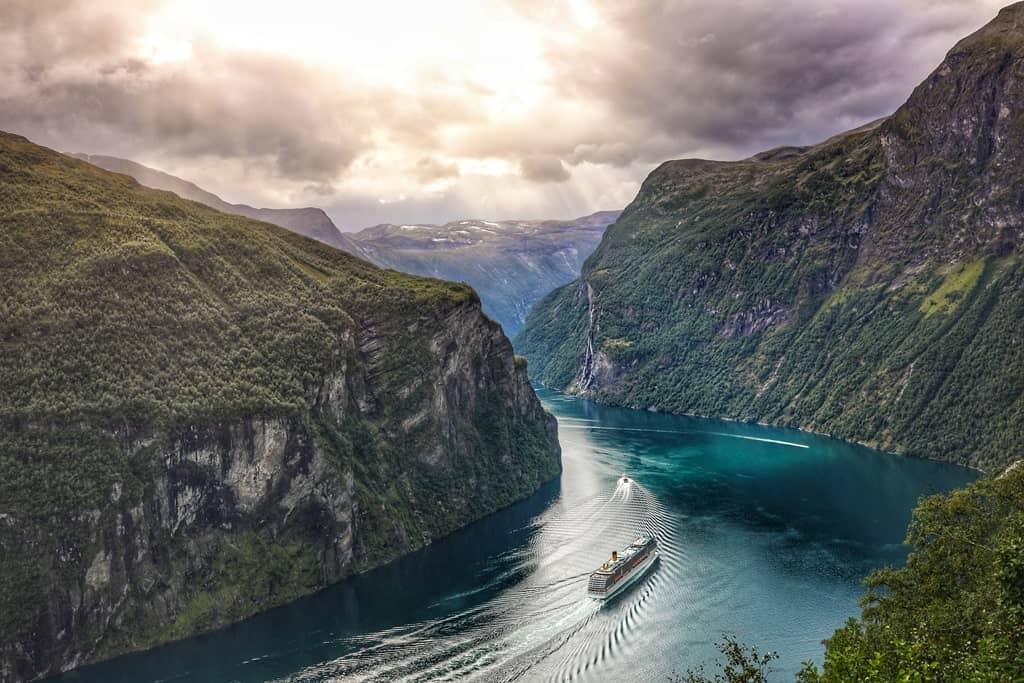
Hardangerfjord is the world’s fifth-largest fjord and can also be found situated in Vestland country. The fjord stretches from Norway’s interior mountains along the Hardangervidda Plateau to the Atlantic Ocean for 179 kilometers. Given its size, many smaller branches leave from the main fjord, with glaciers to be spotted, too.
This is a particularly beautiful part of Norway, with many gushing waterfalls, chances to relax in waterside saunas, and the opportunity to hike to isolated farming communities high above the fjord.
There are some famous rock formations at Hardangerfjord, most notably the Trolltunga (Troll’s Tongue). Hanging 700 meters above the water, just like a petrified tongue of a giant troll, this spectacle draws visitors from far and wide to marvel at the majestic scenery.
Getting there:
A flight from Oslo to Bergen takes 50 minutes; from Bergen, Hardangerfjord is easily reached via buses or by self-driving 100 kilometers alongside the fjords (taking an hour and a half). Trains from Oslo to Bergen, specifically train 41 from Oslo Central Station, take just under seven hours.
You might like: From Øystese: Hardangerfjord RIB Boat Fjord Safari
Oslofjord
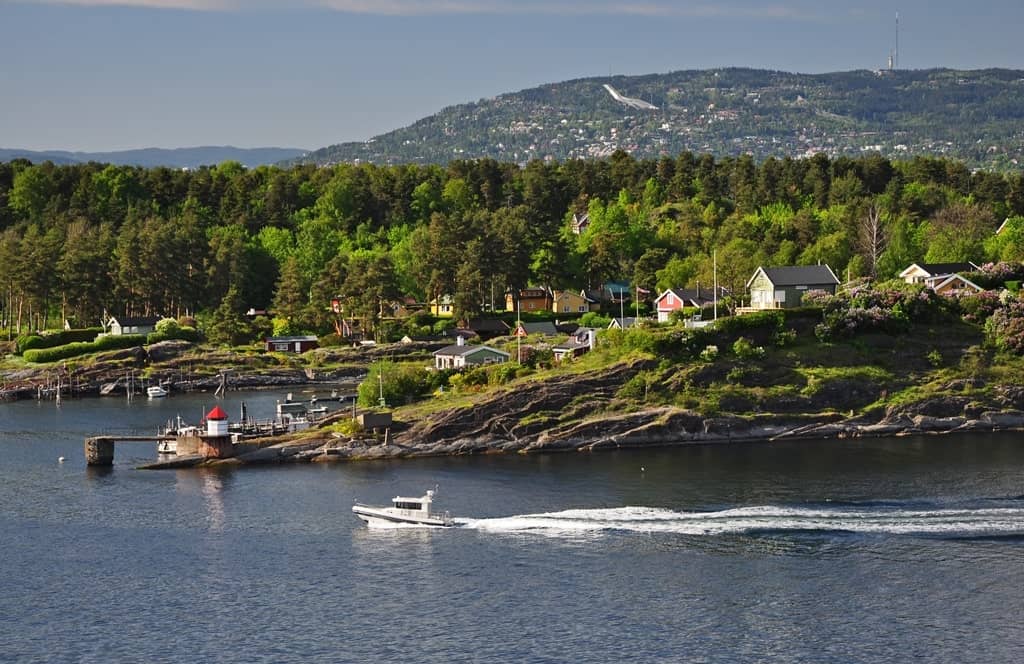
The 100-kilometer-long fjord is an intrinsic part of the Norwegian capital city. This actually isn’t a fjord in the geological sense but rather in the Norwegian meaning of the fjord, which can refer to a wide range of waterways. That doesn’t stop it from being one of the best fjords in Norway.
Oslofjord has shaped the history of the region and is a fascinating place to explore. Its many islands each have their own distinct character and identity; these can be reached by boat from the city. Staying in cabins along the water’s edge on Lindøya, visiting the ruins of a monastery on Hovedøya, and being surrounded by rabbits on Gressholmen.
Getting there:
There are many boats, tours, and excursions that leave Oslo to explore the fjord and its islands. You can choose a day trip using regular Oslo Ferries or even a tour of multiple days.
You might also like: Sightseeing Cruise through Oslo’s Fjords

